As we glided over the boreal forests of northwest Ontario some years back, the 20-something pilot of the vintage DeHavilland Beaver in the seat to my left gave me a nudge. I looked over at the kid — the first question I asked him upon boarding was, “How many hours do you have?” — and he pointed to the sticks in front me.
His blonde hair poked out like corn silk from under a ball cap and his youthful face bore a questioning look. He glanced again at the sticks, and gave me a nod. Realizing what he was suggesting, I looked him dead in the eyes and mouthed the question, “Me?”
He nodded. I’m sure my eyes were the size of salad plates as I reached forward and grabbed the yoke of the Beaver. My headphones buzzed to life.
“See that big lake at the edge of the horizon?” he asked. I looked out over the black spruce and birch forest below us. There were pothole lakes everywhere. Hundreds of them. But ahead of us on the horizon, through the plexiglass windshield and the blur of the Beaver’s propellor, a larger body of water loomed. I nodded.
“That’s where we’re going,” he said. And he took his hands off the controls, leaving me to fly the plane.
Getting there is half the fun
More Like This
The morning before our flight, my buddy Mark Taylor and I were joined by a couple of other writers for a junket north to chase pike and walleye in the cold, tannic lakes of the northwest corner of Ontario. We got a ride from the tourism bureau based in Thunder Bay from our hotel in Duluth, Minn., along the shores of Lake Superior to the airplane dock on the outskirts of Thunder Bay.
The group of us spent the previous week in Duluth at an outdoor writing conference, and we took advantage of an offer to spend a few days after the meetings in the north country, casting flies to hungry fish. When I noticed the trip on the conference schedule, I immediately pinged Taylor.
“We have to do this,” I said. He hadn’t fished the far north in Canada before, but he and I had fished together quite a bit over the years, from Alaska to Virginia and in my home state of Idaho. I love the boreal north — the peace and quiet of a Northwoods lake broken only by the sound of a modest outboard motor and a skiff skirting over calm, dark water is one of those visceral fly fishing experiences that every serious angler should take in.
After our little road trip along Lake Superior to the dock where our ride north waited, tied to the dock and just oozing with potential, our hosts prepared a great little lunch spread for us. The group of writers, hungry after an hours-long drive, assembled some Dagwood-style sandwiches, scarfed down a few bags of chips and we even dove into a big bowl of cold, fresh Caesar salad. The meal and the great conversation with the tourism folks hit the spot.
And of course, we were dying to get in the plane and head north. The quicker we ate, the quicker we’d be on our way. If we played our cards right, we could be fishing before dark.
Taking off
Over years of visiting the far north with a fly rod in hand, I’ve had the chance to watch the world glide by beneath me from the unique perspective as a passenger in a DeHavilland Beaver. It might be the smoothest ride there is — altitude is never terribly severe, and it’s largely a fly-by-sight proposition. Good weather, good flight. Bad weather, no flight. Simple as that.
I’ve also watched over the years as pilots hop in after shoving off from a dock in some remote angling outpost and proceed to prime the engine, adjust the fuel mixture and get the flaps just right for takeoff. Once they crank the engine, the first look at the instruments is at the oil-pressure gauge to make sure everything is flowing through the tough but finicky machinery. The report of a Beaver’s engine is unmistakable. If you’ve had the pleasure of riding in one, it’s a sound you’ll never forget. You can recognize its tell-tale growl from both within the plane and from outside as one of these venerable crafts approaches out of the ether to either pluck you from the wild or to deliver you to it.

Takeoff from a body of water — some Beavers have hybrid landing gear that enables them to take off and land on runways, too — is one of those physics-defying moments. Honestly, from within the plane, it’s easy to imagine every possible disaster as the plane starts to glide across the chop of an Alaskan bay or a sheltered cove on some Northwoods pothole. You can envision a wave swamping a pontoon and pulling the plane under the drink. It feels likely that a gust of wind could simply tip the seemingly top-heavy craft and send it to the bottom.
But then, without fanfare, you’re flying. The friction between the water and the craft just disappears, and the water starts to fall away. Suddenly, you’ve got a bird’s-eye view of the land and waterscape below, and the plane starts to eat air miles at a modest altitude.
The ride
On our two-hour flight north from Thunder Bay to a remote wilderness outpost, four passengers, myself included, rested heads against the windows and took in the vast country below. From the perspective of the Beaver, you get a detailed look at the natural history of the land and water below. Scorched earth from past fires (you’d be surprised how many fires have burned across the boreal north over the last two decades or so) are easily seen, and the geology of certain areas is easily determinable.
On this flight, the landscape below shifted between sheer black as we cruised over burned-out wildfires, dark green as we glided over old-growth black spruce forests and a fresh, bright green as we topped copses of newly leafed-out birches. The pothole lakes reflected the blue-gray of the hazy afternoon skies, and visibility was stellar.
As I took the yoke, and the pilot relinquished the most basic of controls, I was surprised how sensitive the plane was to even the smallest nudge of the sticks. Keeping the target lake in view, I simply had to maintain the direction. It seemed so simple. Unfortunately, it wasn’t as easy as it looked.
The Beaver
The first DeHavilland Beaver produced for daily service was delivered to the Ontario Department of Lands and Forests in April of 1948. The plane was produced for the next 20 years or so — the original production line ceased operating in 1967 after more than 1,600 planes had been placed into service all over the world. Many of the planes have been rebuilt and improved over the years — replacement parts for the Beaver are still produced by Viking Air of British Columbia — and Beavers are still in service around the globe. The first Beaver retrofitted with an electric motor was tested just over a year ago in Vancouver.
Over time, it’s proven to be perhaps the most durable and dependable aircraft used largely for utility purposes (air taxis, remote postage delivery, etc.) the world has ever known. It’s easily the aircraft of choice for bush pilots the world over, and it has allowed military expeditions to venture into remote country that was once only reachable by foot or boat.
When one of these crafts goes up for sale, a buyer should count on spending about $350,000 to acquire one.
Hail Caesar
The first challenge I noticed while “flying” the craft was the general tilt of the plane. I had to crane my neck to keep the destination lake in sight because our glide path had the front of the plane slightly elevated. I naturally pushed slightly forward on the sticks to lower the plane’s nose. This, of course, resulted in the loss of altitude — and at 130 mph, it’s a pretty quick descent.
From the corner of my eye, I could sense the grin spreading out across the young pilot’s face, as I struggled to find the “sweet spot” I needed to guide the plane toward our destination while also maintaining our 1,500-foot cruising altitude. I never gave a thought to the loss and then sudden recovery of altitude and what effect that might be having on the guys behind me who had ceased being my fishing buddies and were now my passengers.
A minute or so into my sole Beaver piloting experience, Mark, who was seated in the second row of seats but behind the actual pilot of the craft, reached forward and tapped me on the shoulder. I looked at him.
He gave me a big grin as he mouthed, “Are you flying this thing?” I nodded, my smile likely stretching off the confines of my face. He laughed and sat back, shaking his head from side to side.
I continued to guide the craft as best I could, both exhilarated and terrified at the same time. I’ve honestly never truly had the desire to pilot an aircraft, but I’ve often dreamed of being able to go just about anywhere, anytime thanks to the flexibility of possessing a plane — I think most anglers who love to venture far afield have had the same dream. Unfortunately, those with honest-to-God day jobs rarely make the scratch needed to possess, let along maintain and fly, a Beaver. We must be content with the occasional ride. Or, if you’re like me, with the once-in-a-lifetime opportunity to simply steer, kind of like when you were riding along a dirt road all those years ago and your grandfather says, “Here, take the wheel for a second while I grab a beer.”
And, of course, the results were likely similar. While I didn’t run us into a ditch or anything (and the pilot was literally right there to regain command on a whim), I did struggle with altitude. Nose up, up we went. Nose down, down we dropped. Subtle ups and downs followed as I worked to get the feel for the craft over the next few minutes.
Then, a familiar scent started to waft through the cabin of the Beaver. Lunch. Specifically, Caesar dressing.
Mark reached up and tapped my shoulder, half laughing and half cringing. Behind me, a younger outdoor writer was busy filling the barf bag with the meal we’d enjoyed just before climbing aboard the aircraft and starting our adventure north. I looked over at the pilot and shrugged. He grinned from under his ballcap and took the controls away from the would-be pilot.
I had induced vomit.
Thankfully, there wasn’t a sympathetic puker among the rest of the passengers, and this little incident has become just another great story on a trip full of great stories. And while it’s easy to make fun of the poor kid for acquiring air sickness, I was reminded frequently that my up-and-down antics behind the yoke were palpable.
“I knew something was different the second you put your hands on the sticks,” Mark told me later that evening over a tumbler of whiskey at the lodge. The poor kid who suffered the most from my short-lived tenure as a Beaver pilot was still too sick to drink, but he agreed completely.
“Listen,” I said in my defense. “When you have more than seven minutes of flight time under your belt, you can complain. The way I see it … we’re all here, safe and sound.”
“You’re welcome.”










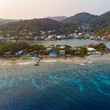
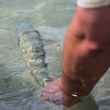



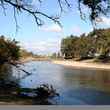
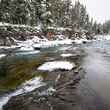



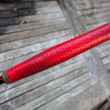
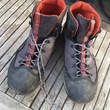



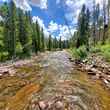
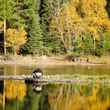

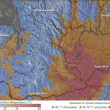
Comments
Marquita replied on Permalink
Thank you for this lovely article. I grew up in a De Havilland Beaver. My father piloted his Beaver into remote landing areas in Wyoming, mostly. It was on floats, briefly, in Florida. I never flew in it while it was on floats, but I did get to fly in one in Alaska onto a beautiful hidden lake. I found my father's Beaver in Ketchikan, still going strong! There is nothing in the world like a Beaver. The sound of the radial engine; the durability; it's design. I spent countless hours in this fine bird from a tiny baby to adult. I'm confident it was the impetus for me to become a pilot.
David Cooper replied on Permalink
We used one to ferry workers from Kununerra to the Argyle Diamond mine in the 80's and 90's Had a wide 5 person back seat, and 12 double seats, great journeys,
James Heimer replied on Permalink
When I worked as an engineer in the onshore Louisiana (onshore being a euphemism for the area near the coast dotted with canals and bayous), we used a Beaver to access the small wellhead platforms and platform mounted production facilities we managed. It was able to land in the tight waterways we needed to reach.
One memorable experience was dodging thunderheads and water spouts. Another occurred when a flight was late getting back. The new engineer was on board was very impressed, when the mechanic that flew with our pilot fixed an electrical problem by basically removing and disassembling the dash on a pontoon, as the Beaver drifted around in the canal.
Richard Elder replied on Permalink
I've flown on Beavers off the water a few times going from Seattle or Vancouver to the BC interior, but the most fun was in the Colombian Andes during the two years I worked there. My employer would pay either a car fare the couple of hundred miles to Bogota or a flight off the local cow pasture in a Beaver. If you've ever driven in Colombia and value your life you know which one you'd choose! Watching the pilot drain the oil out of the bottom cylinders before trying to start it was a bit disconcerting. On my first flight I soon realized that there were no instruments on the plane--- just a radio. No problem--- the pilot navigated by going from one mountain top finca to another, circling and waving to his girl friend before flying on to the next one. Quite a contrast between that style of flight and eventually landing at an international airport with runways miles long to make up for the altitude!
Pages